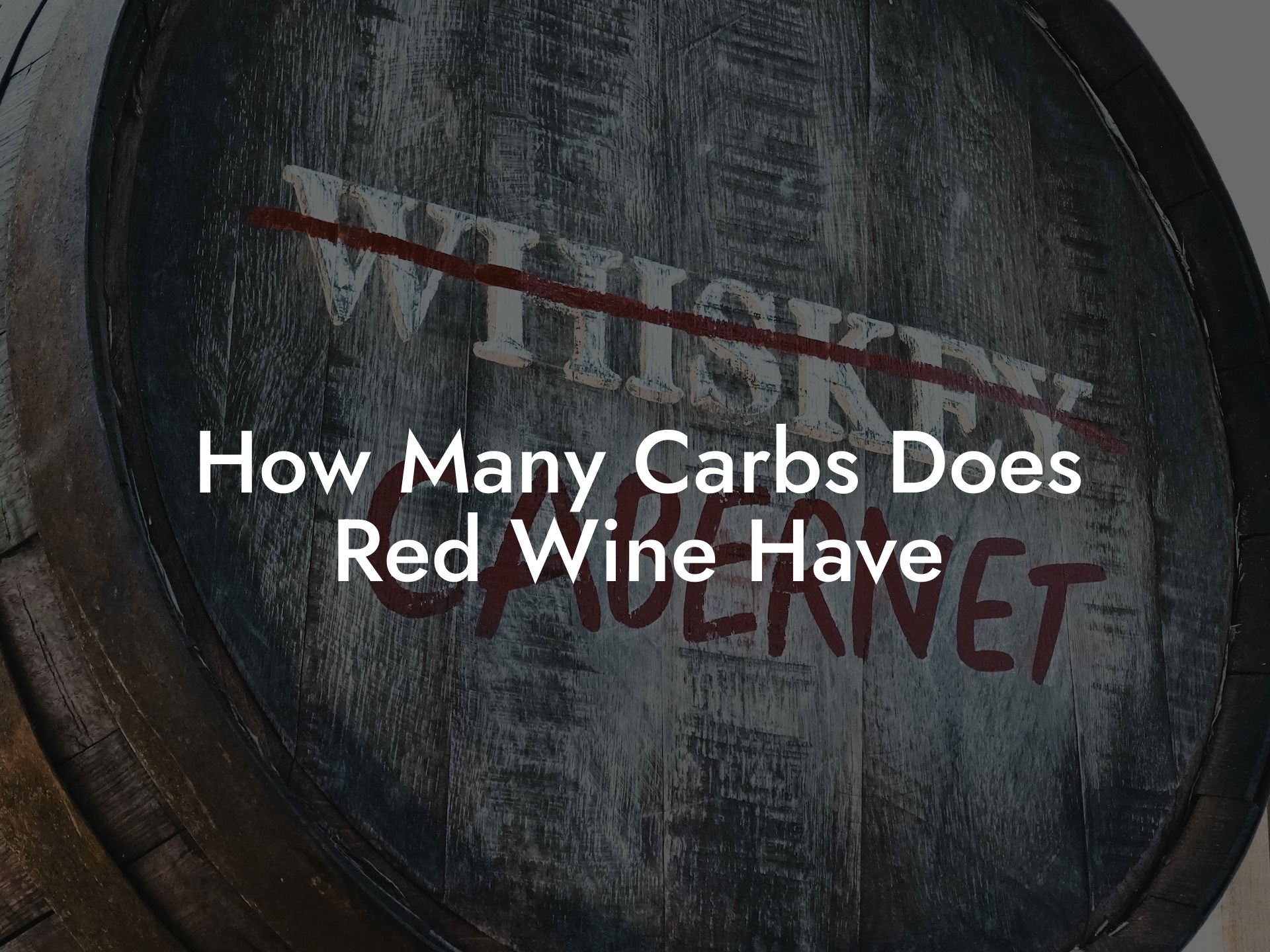Pop open that bottle of red and get ready to dive into the world of carbs! As wine lovers and health-conscious individuals, it's natural to wonder how many carbs are hiding in a glass of our favorite red wine. But don't worry, fellow wine enthusiasts! We're here to provide you all the carb-related information you need and more! So, sit back, pour yourself a glass, and let's learn all about the secret carbs of red wine.
How Many Carbs Does Red Wine Have Table of Contents
Carbs: What's the big deal?
Carbohydrates are an essential macronutrient, providing us with the energy needed to sustain our daily activities. However, consuming too many carbs can lead to weight gain, especially if they come from unhealthy sources. For this reason, many people seek to reduce their carb intake and follow low-carb diets to maintain a healthy weight and lifestyle.
Red wine: A carb breakdown
Understanding the carb content in red wine is crucial for conscious consumers. Here's the breakdown of carbs in red wine:
Do You Want to Win a Free Bottle of Wine?
Don't miss out on the opportunity to win a free bottle of wine every week.
Enter our weekly prize draw today!
1. Residual Sugar
One of the primary sources of carbs in wine is residual sugar (RS). Residual sugar refers to the natural sugar from grapes that remains unconsumed during the fermentation process. The amount of sugar left in a wine is primarily determined by factors like grape variety, fermentation process, and winemaker's preference.
2. Alcohol
Although alcohol is not technically a carbohydrate, it does contain calories. It's important to consider the alcohol content when calculating the overall caloric and carb value of wine.
Carb content by the numbers
The carb content in red wine can vary based on several factors, including grape variety, winemaking process, and residual sugar content. Generally, a 5-ounce (150ml) serving of red wine can have anywhere between 2 to 6 grams of carbs.
Low-carb red wine options
- Dry Red Wines: Wines like Pinot Noir, Cabernet Sauvignon, and Merlot typically have lower sugar levels, making them lower in carbs.
- Old World Wines: European wines from regions like France, Italy, and Spain are often produced in a traditional style, resulting in lower sugar levels.
Higher-carb red wine options
- Sweet Red Wines: Wines such as Port, Madeira, and some red dessert wines can have higher sugar levels and carb content.
- Late Harvest Wines: Picked later in the harvest season when the grapes have higher natural sugar content, these wines tend to be higher in carbs due to the increased sugar levels.
How Many Carbs Does Red Wine Have Example:
Imagine you're enjoying a glass of Pinot Noir at a Black Wine Club event. The wine label boasts an alcohol content of 13% and low sugar levels, hinting at its low-carb nature. So after sipping on a 5-ounce serving of this tasty red wine, you've consumed roughly 2 to 3 grams of carbs. That's not too shabby for a delicious glass of wine!
Now that you're armed with carb knowledge, you can pour that next glass of red wine with confidence! If you're seeking a low-carb wine option, consider sticking to dryer, old-world red styles. So, fellow wine lovers, share this article with your friends and continue to dive into the enjoyable - and educational - world of wine! Don't forget to explore more of the fantastic articles and resources right here at Black Wine Club. Here's to discovering and appreciating wine, one glass at a time!
Do You Want to Win a Free Bottle of Wine?
Don't miss out on the opportunity to win a free bottle of wine every week.
Enter our weekly prize draw today!












